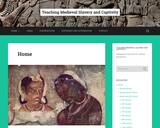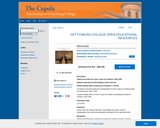This is a module framework. It can be viewed online or downloaded as a zip file.
As taught Autumn Semester 2010
Most history students, when applying to university, say they want to widen their knowledge of the past. As a School we take you at your word, teaching history from AD 500 onwards. This module introduces you to Europe in the Middle Ages (500-1500), a period in which Nottingham University has a distinguished tradition, built up by Jim Holt, Donald Bullough, Robert Markus, Bernard Hamilton and Michael Jones, and continued, we hope, by ourselves. The period covered by the module runs from the end of the Roman Empire in the west to the Renaissance. The legacy of this period is still with us: disputed notions of what constitutes European ‘unity’; profound divisions between West and East (and North and South); clashes between Christian and non-Christian cultures, especially Judaism and Islam. The module will introduce you to current historical debates and to a range of primary sources, in English translation, which will allow you to test your existing critical skills on unfamiliar and challenging material; in this respect it links effectively with the Learning History module. We hope that you will enjoy learning about this distant but formative period of European history, highly relevant to many of the dramatic changes taking place in Europe and the wider world today. If you do, remember that you can continue to study it throughout your time here.
Module Code: V11219
Suitable for study at: Undergraduate level 1
Credits:20
School of History:
Our teaching and learning methods, at both undergraduate and postgraduate levels, are strongly focused on 'active learning'. We emphasise that effective learning in History comes especially from one's own enquiries, critical thinking, and reflection.
You will therefore be encouraged to become independent learners and thinkers, whilst being guided by expert tutors. Active participation and involvement in class discussion and group activities are therefore given priority as a means of developing skills required for learning, researching and employment.
Our academic staff are central to our success and create our lively and inclusive research culture. All of them are nationally or internationally recognized scholars in their fields.





